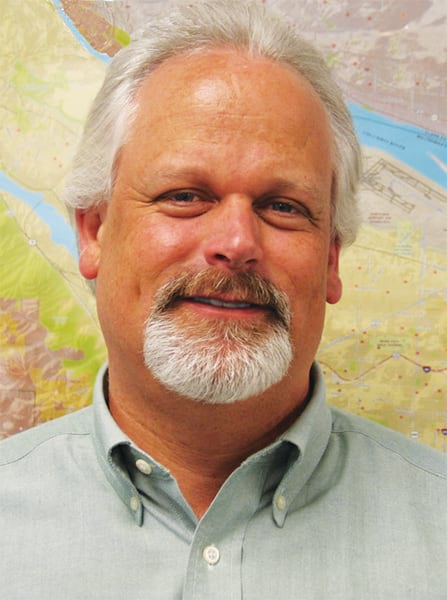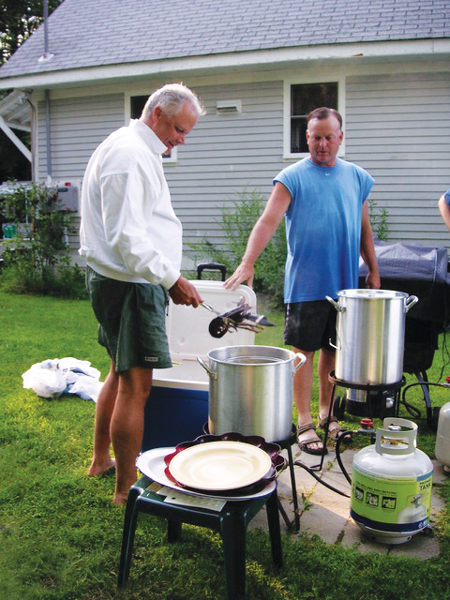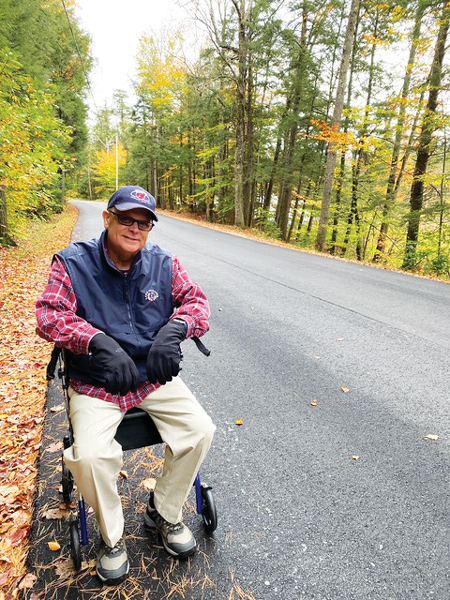Think of how easy it is to pull up a map on your smartphone and search for a store, get driving directions to a friend’s house, or see how long it will take to get to the airport on various modes of transportation. It’s so simple. But that detailed street map data—with things like speed limits, turn restrictions, and routing information—hasn’t always existed. It had to come from somewhere.

In the mid-1980s, fresh out of college, John Cassidy set out on a career-consuming journey to help bring street map data out of government files and make it available and serviceable for commercial use. This endeavor that Cassidy was part of while working at Geographic Data Technology (GDT); Tele Atlas; and, later, Esri partner TomTom ended up morphing into a digital mapping revolution that still reverberates today.
“If you think about all the street data that’s available on the internet and the advances that have been made in GIS alone, John had a pretty big part in that,” said Dave Magee, a former colleague of Cassidy’s who is now the northeast account executive for Esri partner Schneider Electric.
Cassidy also had an expansive perspective of what street map data could be used for, according to his longtime friend Earl Nordstrand, retired manager of the ArcGIS Business Analyst development team at Esri.
“He understood what GIS was, and he took a broad view of how this data could be used in the GIS industry,” said Nordstrand. “He was very much an advocate of not creating just a street network but also integrating that street network into an overall data structure that allowed users to have the correct boundaries and correct geography for a lot of different applications.”
This outlook helped Cassidy get some of the biggest companies in the world on board with using street map data—companies that, today, couldn’t operate without it. And he did it by being curious and personable; listening to people’s needs; understanding how to apply GIS technology to solve business problems; and, perhaps most importantly, having fun with it all.
Comfortable with Maps and Computers
Geography wasn’t Cassidy’s first choice for a major in college, but after realizing that he wasn’t cut out for computer science or meteorology, he figured it would be an interesting subject to study.
At the University of New Hampshire, he got a bit of a false start with the major, frustrated that most of the work involved memorizing facts that, he said, anyone could look up in a book. So Cassidy transferred to the State University of New York College at Oneonta (SUNY Oneonta), where, he was told, faculty and students were doing interesting work.
“They had a pretty progressive applied geography program with lots of computer-based cartography,” he recalled. “That’s how I wound up staying with the major, and I’m really happy that I did.”
When he finished school in 1985, a small company in his home state of New Hampshire was gearing up for a big project and went on a hiring spree. Cassidy got a job there, at GDT, as a digital map technician.

“It was a real novelty to get somebody who actually knew something about geography,” said Don Cooke, founder of GDT. “To succeed in the work, you had to be comfortable with maps and computers, and you had to be able to learn and pick up on stuff. John scored very high on all those points.”
Cooke, who worked at the United States Census Bureau in the 1960s, established GDT in 1980, and the company soon became the Census Bureau’s primary contractor for building nationwide digital maps using its Topologically Integrated Geographic Encoding and Referencing (TIGER)/Line Files. The files provided the first standardized coverage of street centerlines across the United States, Puerto Rico, and island territories.
Not long after Cassidy started at GDT, Cooke learned that the Census Bureau was planning to release its TIGER/Line Files to the public starting in 1989. What Cooke, Cassidy, and their colleagues realized was that, with additional development, the files could be useful beyond government projects—in the private sector.
“We knew cold what was coming out. We knew what it would be good for and where it would be very weak: in areas that didn’t have street addressing,” said Cooke. “We came up with a process to augment the TIGER map data using the address information that the [United States] Postal Service was just making available.”
This was the beginning of GDT’s Dynamap product line, a comprehensive street network that could match about 95 percent of US addresses to a geocoded map, compared to what the TIGER/Line Files could match, which was approximately 60 percent, according to Cooke. This—and the fact that GDT continually updated its database rather than waiting for the Census Bureau to release its TIGER/Line Files every 10 years—made the company’s products the gold standard in street map data.
“GDT was the only player in the ball game in those days,” recalled Nordstrand, who was looking for the best street map data he could find to incorporate into Esri’s GIS products. “We had looked at the TIGER datasets and knew there was a lot of work to be done on them to make them more spatially accurate, so we started talking to GDT, and John was our main contact there.”
“If you think of it, those were John’s first years at the company, when we really developed our premier product line that served us well for the rest of the history of the company,” said Cooke. “It was a great environment for someone with his temperament and skills to get thrown into because we expanded tremendously, and he stepped right up. He was a leader in all that.”
Motivated to Expand What Could Be
Throughout his career, Cassidy remained a leader in advancing street map data and became a visionary for how to apply GIS to business issues.
When Tele Atlas acquired GDT in 2004, Cassidy stayed on as vice president of GIS and government markets, where he nurtured client relationships across both the public and private sectors in the United States, Canada, and Europe. And when Tele Atlas was acquired by TomTom in 2008, Cassidy stayed on for a while before heading to Esri to work as an account manager out of the Boston office for a few years. Some former colleagues at TomTom asked him to come back, though, so he did because “street mapping was always something I really loved,” he said. Cassidy finished out his career leading geospatial and business development initiatives there.

“I wound up, all in all, working for 34 years and did just about everything,” he said—from product management to sales. “I just always looked for ways to do good things.”
According to Cooke, Cassidy put a face to the technology they were building and made people feel comfortable with it—an invaluable skill.
“John was a technological evangelist at the one-on-one level,” Cooke said. “Being a friendly, fun, extroverted type of guy, I think he reached a lot of people.”
One person Cassidy certainly reached was his stepdaughter, Katie Decker, the marketing community manager for the Esri Startup program. Although Cassidy and his wife, Martha—whom he met at GDT—never pressured Decker to pursue a career in GIS, she said she was almost inherently drawn to data and information.
“He [was always] motivated to help expand what could be, which I found interesting,” Decker said. “He helped broker a lot of important data deals that led the technology where it needed to go to actually be useful to people.”
After a long and rewarding career helping to bring street map data to the point that it is now used by governments, businesses, and people all around the world, every day, without much thought, Cassidy retired in 2019. And while, as Cooke noted, Cassidy had always been “totally unfazed by any challenges at all,” the biggest challenge of his life was the last one he faced: cancer. Cassidy passed away on February 21, 2022. But the legacy he’s leaving will no doubt endure.
“The world always has problems that need to be solved, and GIS is a great tool to do that,” he said. “Just keep learning, keep doing, and keep solving problems.”

